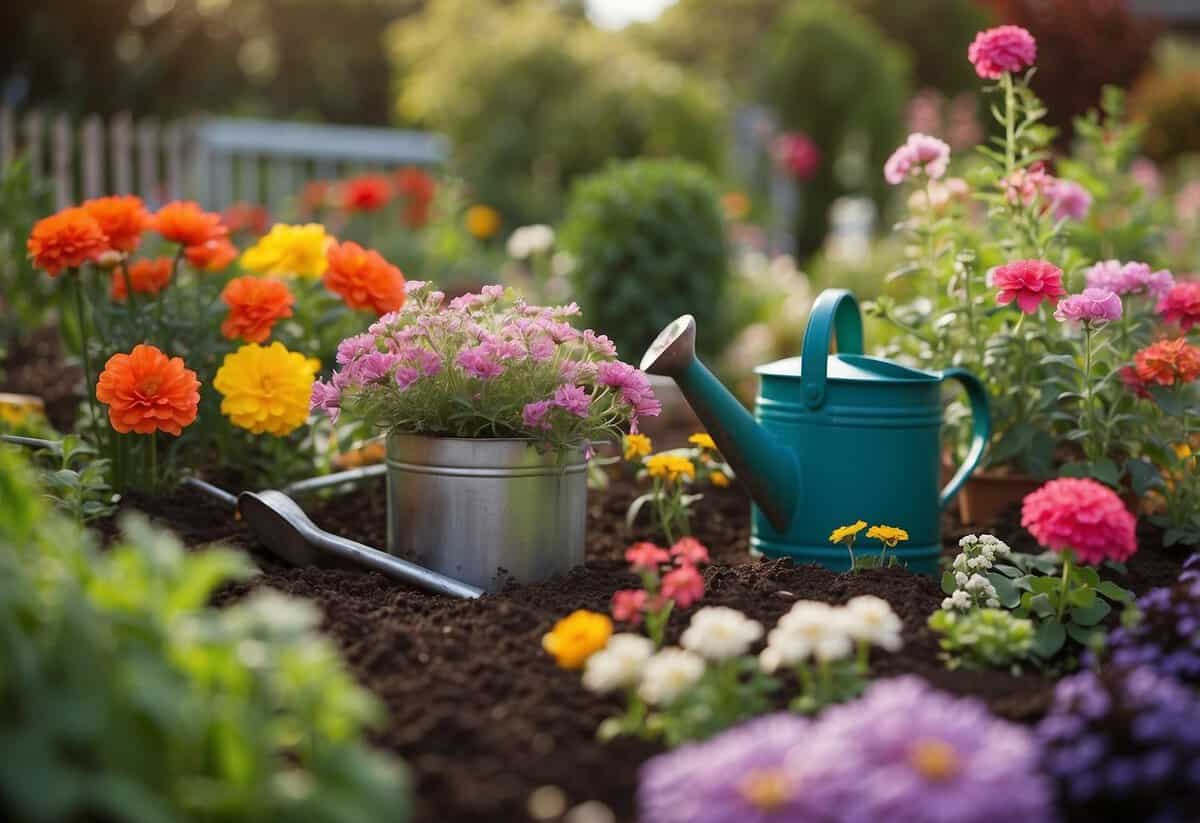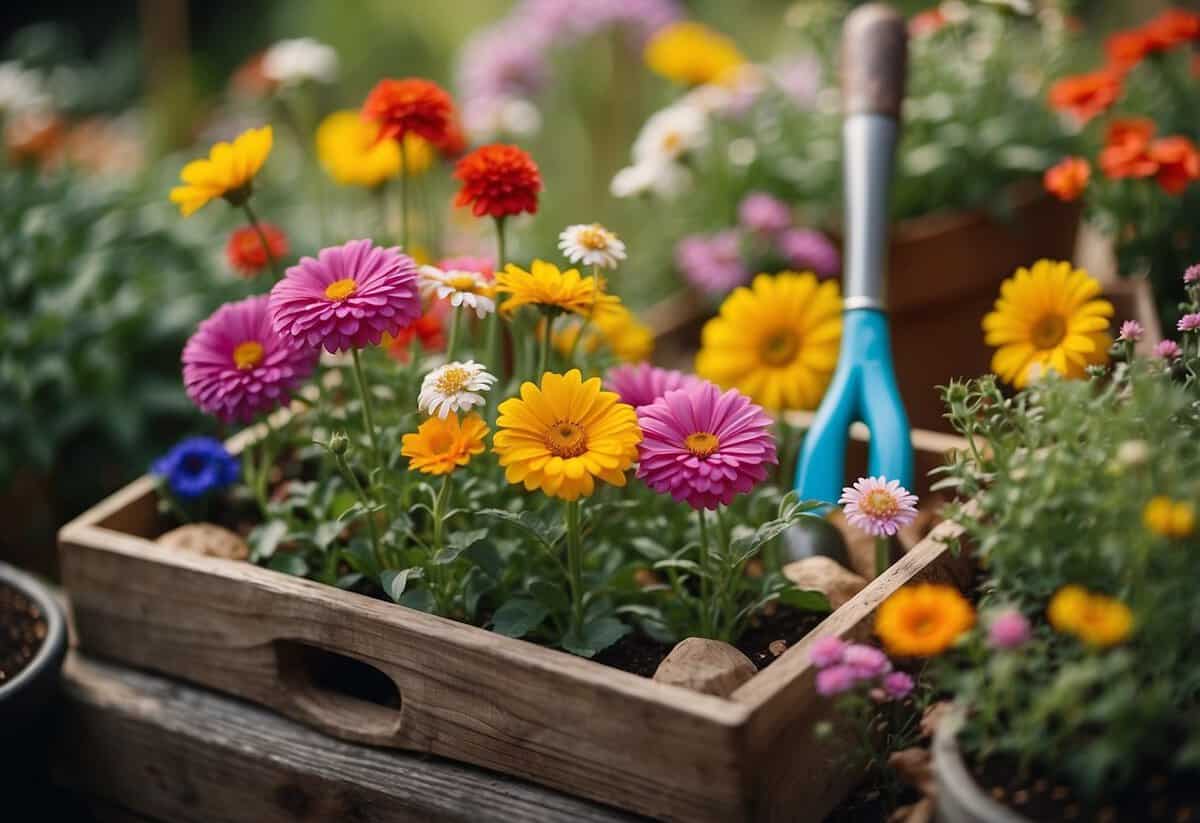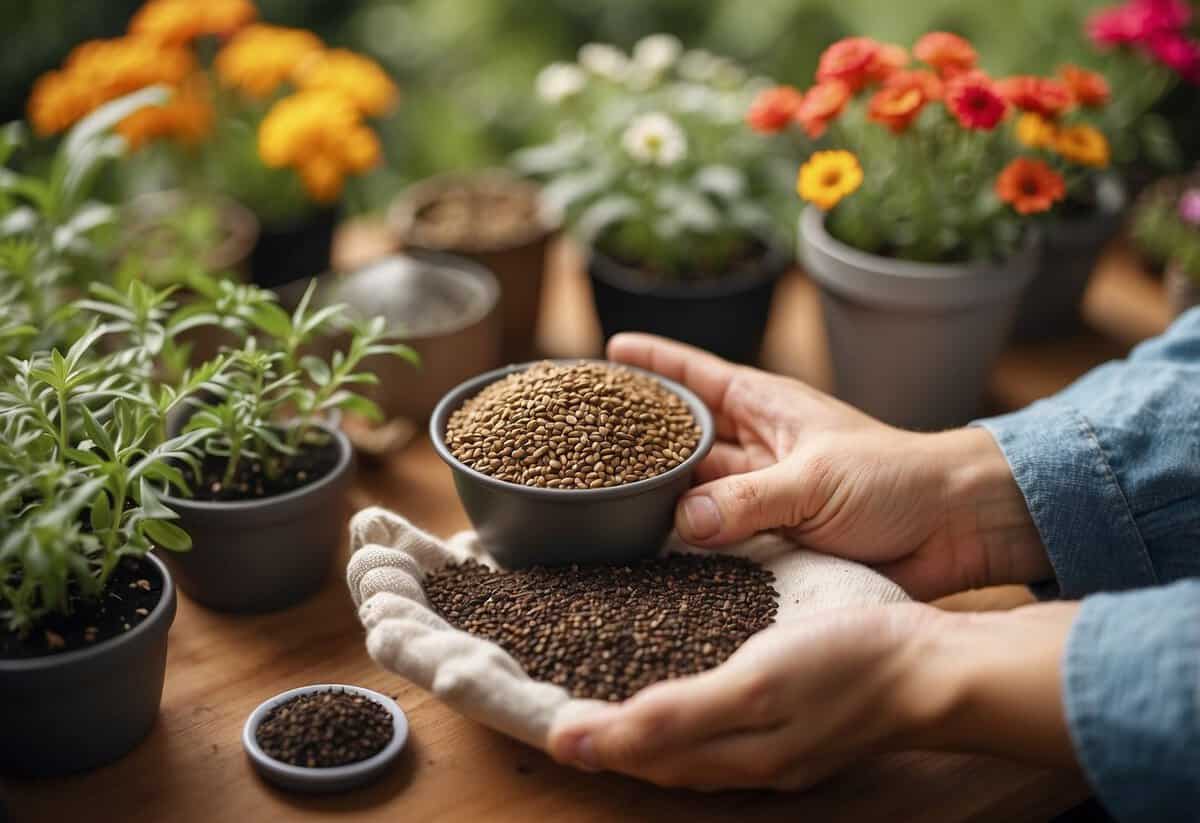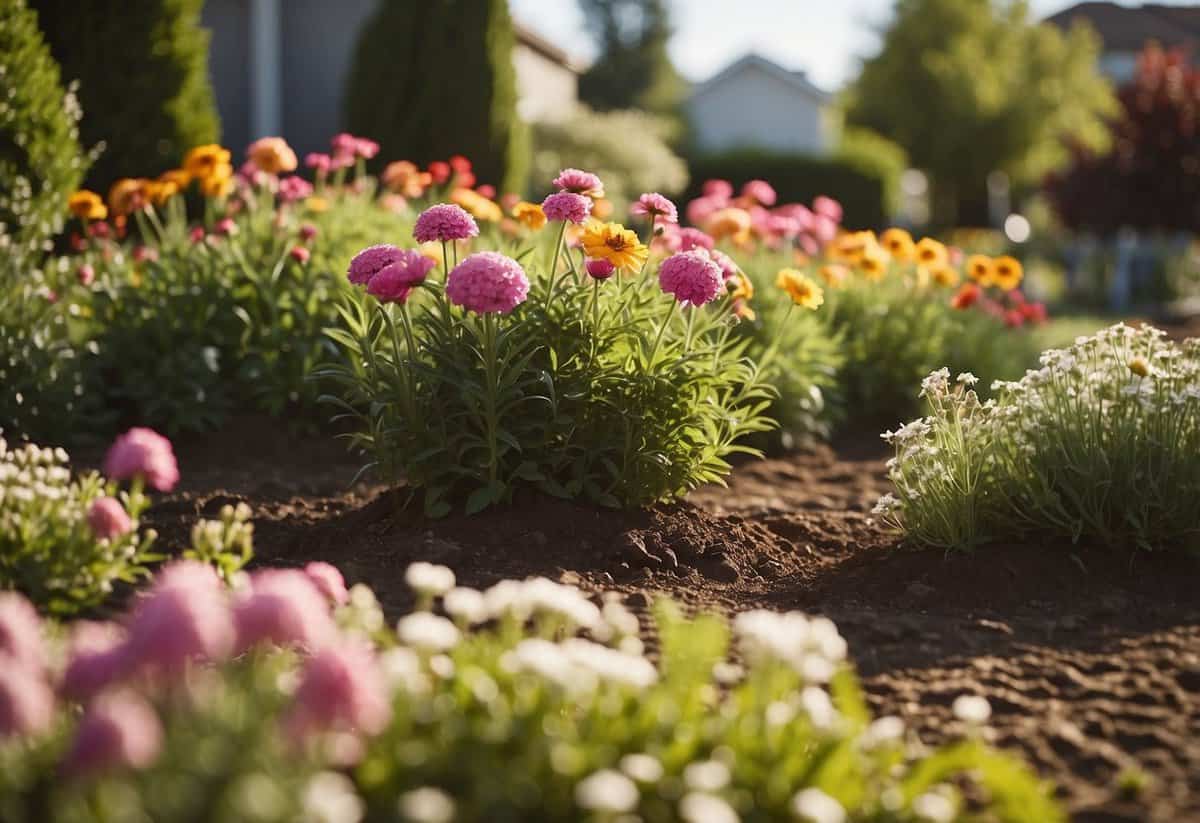Tips for Starting a Flower Garden: A Beginner’s Guide
Starting a flower garden can be a rewarding and enjoyable project. It allows you to create a colorful and vibrant space right in your backyard. From selecting the right location to choosing the perfect flowers, there are several key steps to consider.

Creating a beautiful flower garden doesn’t have to be complicated or expensive. With a bit of planning and some helpful tips, you’ll be well on your way to enjoying a stunning garden. Whether you’re a beginner or have some gardening experience, this guide will help you find joy in your new garden every step of the way.
1) Choose Seasonal Flowers

When starting your flower garden, it’s important to pick flowers that bloom during the different seasons. This way, your garden stays colorful all year long.
Select a mix of perennials and annuals that thrive in your area. For instance, perennials like tulips bloom in spring, while annuals like marigolds can brighten up summer.
To keep variety, add some container plantings. This adds versatility and lets you easily switch plants as the seasons change.
2) Pick the right spot

Choosing the right spot for your flower garden is crucial. Look for a place that gets plenty of sunlight. Most flowers need at least six hours of sun each day.
Consider the soil in that area. Good soil is important for healthy plants. You might need to test your soil to see what it’s made of and if it needs improvements.
Check for any utilities before you start digging. Call to check for buried utility lines to avoid any issues. Proper planning ensures a safe and beautiful garden space.
3) Test Soil pH

Testing your soil’s pH is a crucial step. Most plants prefer slightly acidic to neutral soil, around pH 6.0-7.0.
To test your soil pH, collect samples from different areas of your garden. Mix them in a clean plastic bucket. Let the soil dry out before testing.
Use distilled water when preparing the soil mixture for testing. Tap water can affect the accuracy of your pH reading. Check out more detailed steps on how to test your soil pH.
4) Start with Quality Seeds

Using high-quality seeds is key to growing a successful flower garden. Good seeds have a better chance of sprouting and growing into strong plants.
Look for seeds from reputable suppliers. They often test their seeds for germination rates and quality.
Pay attention to expiration dates. Seeds can lose their viability over time, so fresher seeds are always better. For more tips, check out Evergreen Seeds.
Selecting the right seeds can make all the difference in your garden’s success.
5) Use organic compost

Organic compost can do wonders for your flower garden. It enriches the soil with essential nutrients like nitrogen, phosphorus, and potassium. This helps your plants grow stronger and healthier.
Mix mature compost into the soil before planting to improve water retention and soil structure. It’s especially helpful for potted plants and flower beds.
You can also use compost as a mulch by spreading a 1 to 3-inch layer on top of the soil. This helps prevent weeds and retains moisture, giving your flowers a better chance to thrive.
6) Mulch to Retain Moisture

Mulch is great for keeping moisture in the soil. When you spread mulch around your flowers, it helps to reduce water evaporation.
Using mulch also means you don’t have to water as often. It’s especially useful during hot weather when the soil can dry out quickly.
Always make sure to lay an even layer of mulch. Avoid piling it against plant stems to prevent rot. Mulch doesn’t just help retain moisture; it also improves soil health over time. Consider organic options like straw, which break down and enrich the soil.
7) Water Consistently

Watering your flower garden regularly is key to keeping your plants healthy. Flowers need water to grow, but too much or too little can be harmful.
Check the soil often to see if it’s moist. If it feels dry, it’s time to water.
Using a soaker hose can help get water to the roots without wasting it.
8) Prune Regularly

Pruning is key to maintaining a healthy flower garden. It helps plants stay vibrant and can encourage more blooms.
Remove dead or yellow leaves to keep your garden tidy and promote better air circulation.
Always use sharp, clean pruning shears to avoid damaging your plants. Regular pruning leads to stronger, more beautiful flowers.
9) Plant Perennials for Year-Round Beauty

Perennials are a great choice for your garden. They come back every year and can provide beauty throughout the seasons.
Consider flowers like chrysanthemums and snapdragons that bloom in autumn.
Plants like Japanese maples and ferns add vibrant colors to your garden as the leaves change.
Adding Agastache can also bring bright, aromatic blooms that attract pollinators.
Mixing perennials ensures your garden looks lovely all year.
10) Protect Against Pests Naturally

Keep your flower garden clean by removing leafy debris, dead plants, and decaying material. This helps deter pests. Insects often hide in this type of debris.
Use food-grade diatomaceous earth as a natural, abrasive barrier against crawling insects. Sprinkle it beneath plants and on leaves to keep pests at bay.
Plant flowers like lavender and nasturtium, which naturally repel pests. Lavender’s fragrance and nasturtium’s unique properties can help protect your garden effectively.
For more tips, visit Epic Gardening or Farmer’s Almanac.
Choosing the Right Location

Selecting the best spot for your flower garden is crucial. Focus on the amount of sunlight your flowers will get and make sure the soil is ready for planting.
Assessing Sunlight Exposure
Flowers need different amounts of sunlight. Some love full sun, while others prefer shade.
To start, observe your garden at different times of the day. Note how much sunlight different areas receive. Full-sun flowers need at least six hours of direct sunlight every day. Part-sun plants thrive in areas with three to six hours of sunlight. Shade-tolerant flowers do best with less than three hours of sun or filtered light.
Keep in mind that trees and buildings can create shadows. Watch the sunlight patterns, especially during summer, to know where it’s sunny. If you’re unsure which flowers to plant, always check their sunlight needs on the label or consult a flower gardening guide.
Soil Preparation and Testing
Good soil is essential for a thriving flower garden. Start by testing your soil to know its type and pH level.
You can get a soil test kit at your local garden center or send a sample to a lab. This will tell you if your soil is clay, sandy, or loamy, and reveal its pH. Most flowers prefer slightly acidic to neutral soil. Adjust your soil pH by adding lime if it’s too acidic or sulfur if it’s too alkaline.
After testing, improve your soil by adding organic matter like compost or manure. This helps with drainage and provides nutrients. Mix it well into the top 6-8 inches of soil. If you live in an area with poor soil, consider using raised beds filled with a good potting mix.
For more tips on soil preparation, visit this flower gardening website.
Selecting Flower Varieties

Choosing the right flowers for your garden involves understanding the differences between annuals and perennials, and considering the benefits of native plants. This helps ensure a vibrant and sustainable garden.
Annuals vs Perennials
Annuals complete their life cycle in one growing season. You’ll plant them anew each year. Common annuals include marigolds, petunias, and zinnias. These flowers provide bright, continuous blooms throughout the season but need replanting every year.
Perennials, on the other hand, live for several years. They bloom during specific seasons and then go dormant. Popular perennials include hydrangeas and hostas. While they may take longer to establish, they require less maintenance over time as they return yearly.
Choosing a mix of annuals and perennials can give your garden continuous color. Annuals offer immediate season-long blooms, while perennials provide stability and long-term beauty. Think about your maintenance preferences when deciding.
Native Plants and Their Benefits
Native plants are adapted to your local climate and soil. This makes them easier to grow and maintain. They require less water, fertilizer, and pest control than non-native species. Examples of native flowers in North America include coneflowers and black-eyed Susans.
Besides being low-maintenance, native plants support local ecosystems. They provide food and habitat for native wildlife, including birds, bees, and butterflies. This can help create a balanced, thriving garden environment.
Including native plants in your garden can also help preserve your region’s natural heritage. They are well-suited for home gardens and public spaces, contributing to the resilience and diversity of local flora. Whether you’re a beginner or experienced gardener, native plants offer many practical and ecological advantages.







